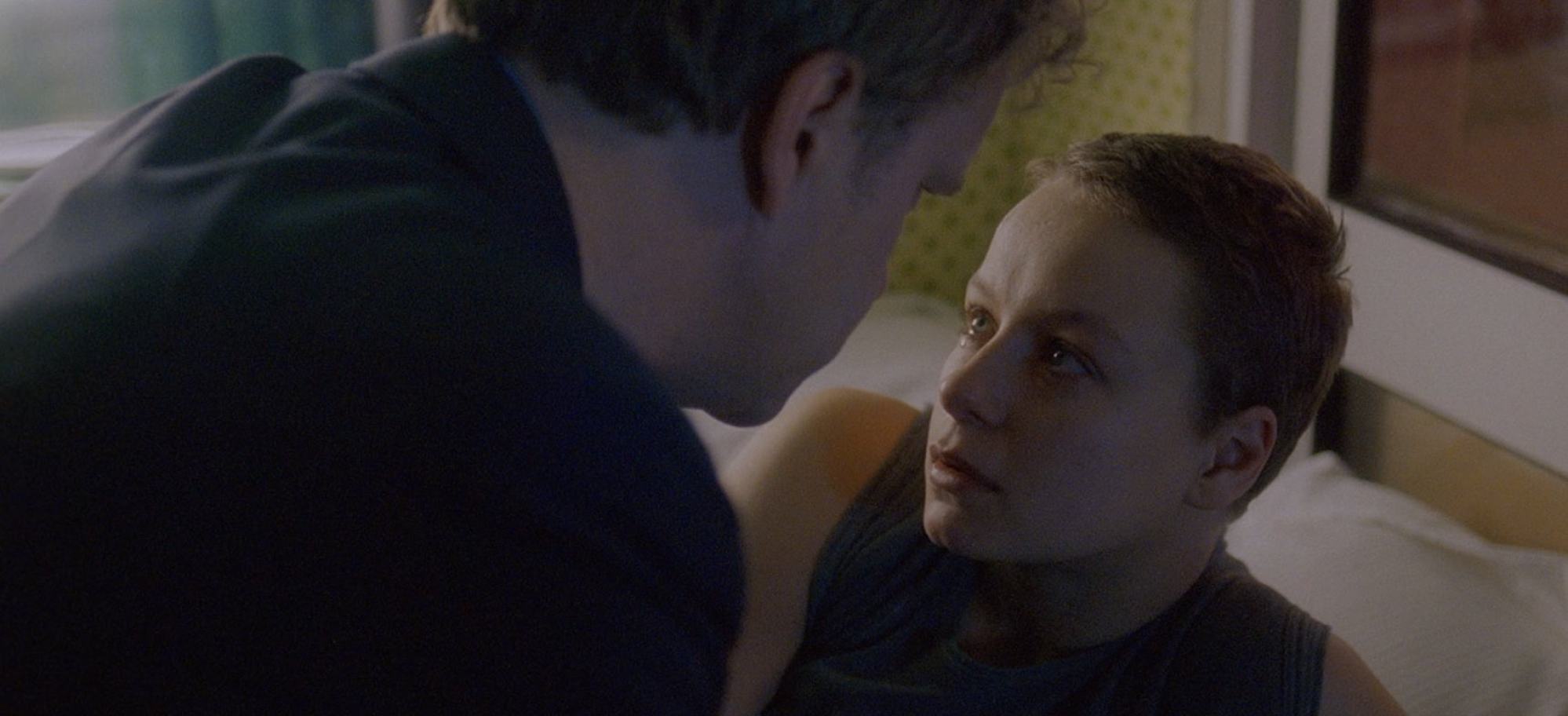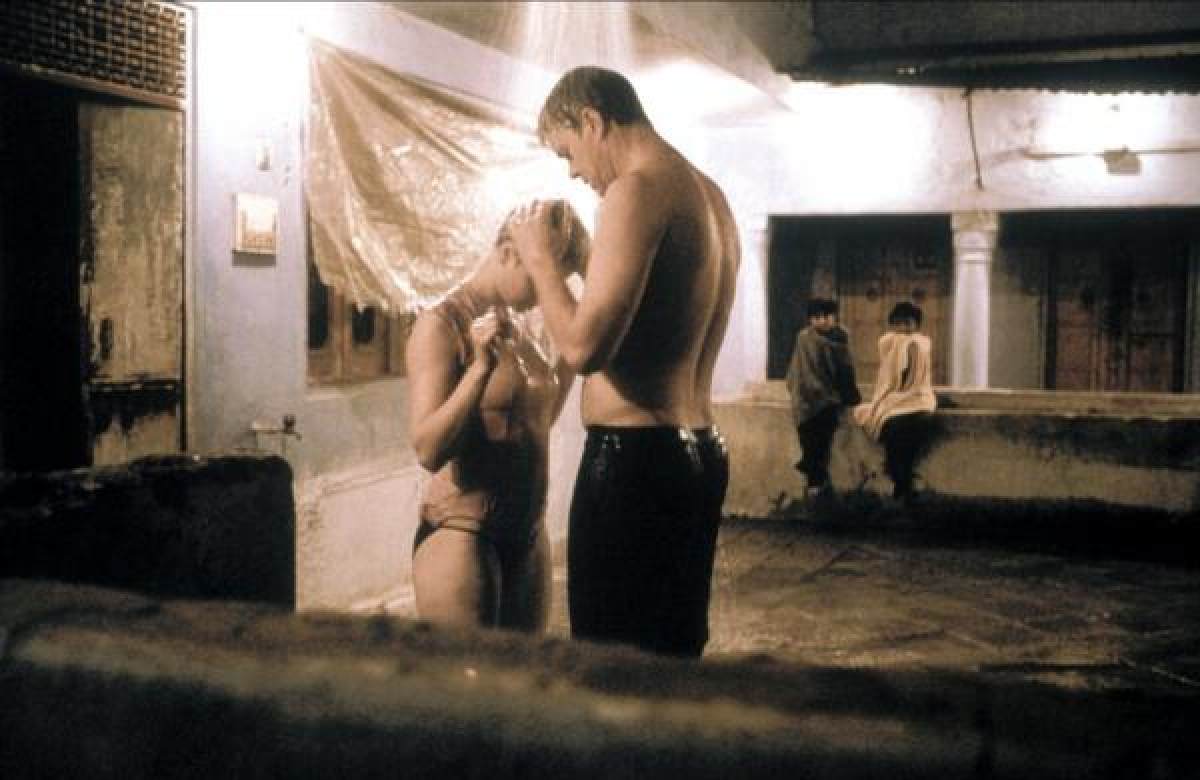“I prefer to take actors and put them in real settings and real locations and real situations rather than create artificial locations that serve the characters,” he told IndieWire.
The technique works especially well in the 2003 film Code 46, a moody sci-fi-romance starring Tim Robbins and Samantha Morton as forbidden lovers in a near future where biotechnology can change how people think and feel.
The film was shot on location in Shanghai, Dubai, Hong Kong and Rajasthan, with interiors in London.
“A lot of the aspects of the world of the film are amalgams of things that already exist,” said Winterbottom. “It wasn’t about creating or inventing anything, it was just, ‘This bit is interesting,’ ‘That bit is interesting,’ and putting them together.
“Shanghai is the main city, but we put the desert of Dubai around the outside of it.”
The contrast between “inside” (the city) and “outside” (the desert), legal and illegal, expat and immigrant is at the heart of the story.
On the trail of a forger, insurance fraud investigator William Geld (Tim Robbins) is sent to The Sphinx, a company in Shanghai which manufactures papeles. Here he meets and falls in love with Maria Gonzalez (Samantha Morton), who knows more than she is letting on.
As ever with Winterbottom’s films, it’s not what happens but how. On the face of it, William and Maria’s Lost in Translation-style romance doesn’t seem especially remarkable. But as we watch them wander the city together, there’s something about the authenticity of the backdrop that adds an intensity to their emerging feelings.
Instead of conventional establishing shots, we have Shanghai’s ever-present neon flickering around them. Instead of extras, there are the endless, faceless crowds. It’s a cinematic language that approximates how we really see things – or perhaps how we remember them.
Shooting on the fly – without sets or, presumably, permits – allows Winterbottom to go wherever he wants. So we get scenes shot on the subway, in road tunnels and at airports – not the sort of thing you’d normally find in a low-budget indie.

Just as the characters break the rules by falling in love – William is married, and the pair share a genetic connection (the Code 46 violation of the title) – wandering off the tourist path lets us experience the disorienting allure of a new city.
Despite all the rules and restrictions, Code 46 is a film about the human capacity to absorb and adapt. Maria, we learn, used to live outside and she wants other people to be able to share her freedom of movement.
The characters speak a kind of pidgin English, with words and phrases taken from French (“avion”/airplane), Spanish (“cerveza”/beer) and Mandarin (“ni hao”/hello), among others.

Recognisable landscapes drift into one another, like the Dubai sands encroaching on the outskirts of Shanghai.
At one point William and Maria spontaneously sing Bob Marley’s “No Woman, No Cry” together. It’s out of tune, out of time and, perhaps, an act of appropriation, but there’s something in the ways their voices entwine that makes it oddly beautiful – and new.
To try to escape their fate, they go on the run together from Jebel Ali in the United Arab Emirates, a city offering unrestricted access. But, of course, it can’t last. When they are caught by the authorities, William has his memory wiped, and is sent back home to his wife and son in England.
Maria stays in the outside and, it is implied, learns to assimilate once more. What we’re left with is a powerful sense of how being somewhere else can make you someone else, if only for a while.







